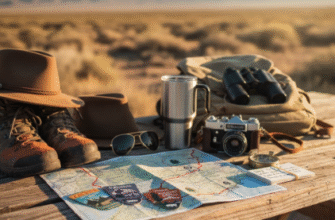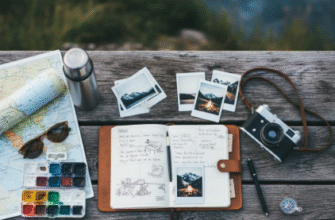I’ve driven past the Spanish Peaks maybe a dozen times, and I never knew what I was looking at.
The Highway of Legends—Colorado’s scenic byway that loops through the southern Rockies—doesn’t just wind past pretty mountains. It cuts through the skeletal remains of an ancient volcanic system, one that’s been stripped bare by millions of years of erosion. The Spanish Peaks themselves, rising to about 13,000 feet, are what geologists call stocks: massive plugs of magma that cooled underground roughly 25 million years ago, give or take a few million. But here’s the thing—the peaks aren’t even the weird part. Radiating out from them like the spokes of a broken wheel are these narrow walls of rock, some stretching for miles across the landscape. They’re volcanic dikes, and they’re everywhere once you know what you’re looking for. I used to think they were just random ridges until a geologist friend pointed at one from the car window and said, “That’s frozen magma.” Wait—maybe I should back up.
When Magma Finds the Cracks in Everything
Dikes form when molten rock forces its way into fractures in the surrounding stone. The magma cools, hardens, and then—over geologic time—the softer rock around it erodes away, leaving these dramatic walls standing above the ground. Some of the dikes near the Spanish Peaks are only a few feet wide. Others are massive, like the Profile Rock dike, which runs for something like 13 miles and rises up to 100 feet in places. Honestly, it’s disorienting to see them in person because they don’t look natural—they look built, like ancient fortifications or the ruins of some massive construction project.
The Ute People Noticed Long Before Geologists Did
The indigenous Ute and Apache peoples who lived in this region had their own explanations for the dikes, and frankly, theirs are more poetic than anything you’ll find in a petrology textbook. They called the Spanish Peaks “Huajatolla,” which translates roughly to “breasts of the earth.” The radiating dikes were said to be the work of the Great Spirit, who laid them down as a kind of map or guide. I guess it makes sense—if you’re navigating this landscape on foot, these stone walls would definately serve as landmarks, visible for miles. Turns out, the legends gave the highway its name, and the whole route is steeped in stories about outlaws, lost gold, and frontier violence. It’s hard to seperate the geology from the mythology here, and maybe that’s the point.
Erosion as Sculptor, Time as the Only Tool That Matters
What strikes me most about the dikes is how much they reveal about deep time. The magma that formed them never reached the surface—it solidified underground, hidden. For millions of years, it stayed that way while the overlying rock slowly wore away. Rain, wind, freeze-thaw cycles—none of it dramatic on human timescales, but cumulatively relentless. The softer sedimentary layers eroded faster than the hard igneous rock of the dikes, so now the dikes stand proud, like inverse valleys. I’ve seen similar features in other volcanic regions, but nowhere else are they this extensive or this visible. There’s something almost exhausting about imagining the time involved, the patient grinding of stone into dust.
Anyway, the byway itself is only 82 miles long, but it packs in more geologic drama per mile than almost anywhere I’ve been.
Why You Should Care About Rocks That Don’t Do Anything Anymore
I used to think extinct volcanoes were boring—dead systems with nothing left to say. But the Spanish Peaks and their dikes tell a story that’s still unfolding, just at a pace we can’t really percieve without instruments or a lot of patience. The dikes are still eroding, still changing shape. In another few million years, they might be gone entirely, or maybe the peaks themselves will erode down to nothing and the dikes will be all that’s left. It’s weirdly humbling to stand next to a 25-million-year-old wall of rock and realize you’re just seeing one frame of a much longer film. The Highway of Legends doesn’t answer all your questions about this place—it just shows you enough to make you realize how much you don’t know. Which, honestly, is probably the best thing a landscape can do.









